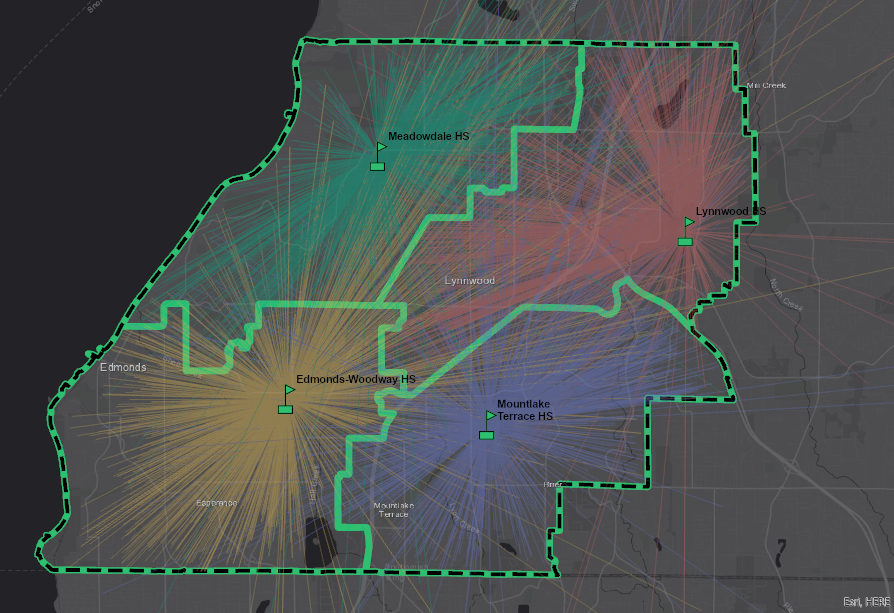Analyses of Local Trends in Housing and Student Choice Lead to More Reliable Enrollment Forecasts
Client: Edmonds School District
Location: Snohomish County
Meet the Client
The Edmonds School District in south Snohomish County covers six small suburban communities in Washington state. ESD operates 34 pre-kindergarten through 12th-grade schools and has around 29,000 students.
The Challenge
Edmonds School District (ESD) wanted to understand how regional demographic changes and residential development were affecting enrollment trends, particularly the differences between district subareas. Land use is an important factor in population growth, and ESD was aware of the differences between the many communities it serves—some traditionally single-family neighborhoods were planning for residential infill, while others were expanding into urban growth areas to accommodate growing housing needs, especially along current and future transportation corridors. FLO’s geographers and demographers were particularly well-suited to evaluate the differing land use trends, particularly because our forecasting methodology includes a comprehensive analysis of residential development.
The Solution
FLO met with municipal and county planners to understand local context and accessed building permit databases and GIS data that track current and future construction projects. Compiling the abundance of residential development and land use data is a key milestone in preparing for the generation of enrollment forecasts. For ESD, FLO worked with five city planning departments, as well as Snohomish County, to acquire a comprehensive understanding of current and future land use within the district.
To ensure that necessary data was acquired and evaluated in advance for forecasting, FLO met with planners and prepared a concise framework for facilitating the retrieval of relevant information. These intentional readiness steps contribute to FLO’s ability to consistently deliver enrollment forecasts to ESD in time for district staff to incorporate into their short- and long-term planning efforts.
ESD appreciated this approach to better understand its communities, and, in 2015, FLO began preparing ESD’s ten-year enrollment forecasts.

The Results
The enrollment forecasts provided ESD with valuable insight into the prospective growth of student enrollment at a district-wide scale, as well as for each attendance area and school/program. Where students live and which schools they attend is an important distinction—FLO’s assessment of intra-district transfer rates helped reveal patterns of student choice and quantify ESD policies. For instance, FLO identified particular schools with high transfer-in rates that were projected to experience overcrowding in the future, which allowed ESD to evaluate its policies and programming to alleviate enrollment balance issues among schools before they began.

A map depicting where high school students enrolled at Edmonds School District live and which school they attend.
Since 2015, FLO has continued to prepare annual enrollment forecasts to support district long-range planning. During that time, FLO used the forecasts to help ESD assess the effects of potential attendance-area boundary changes, as well as to confirm the planned establishment of a kindergarten center to serve a defined region within the district.
Contact Us
Explore Our Work
-
City of Roseville Redistricting
Client: City of Roseville
-
City of Reno Redistricting
Client: City of Reno
-
City of New Orleans Redistricting
Client: City of New Orleans
